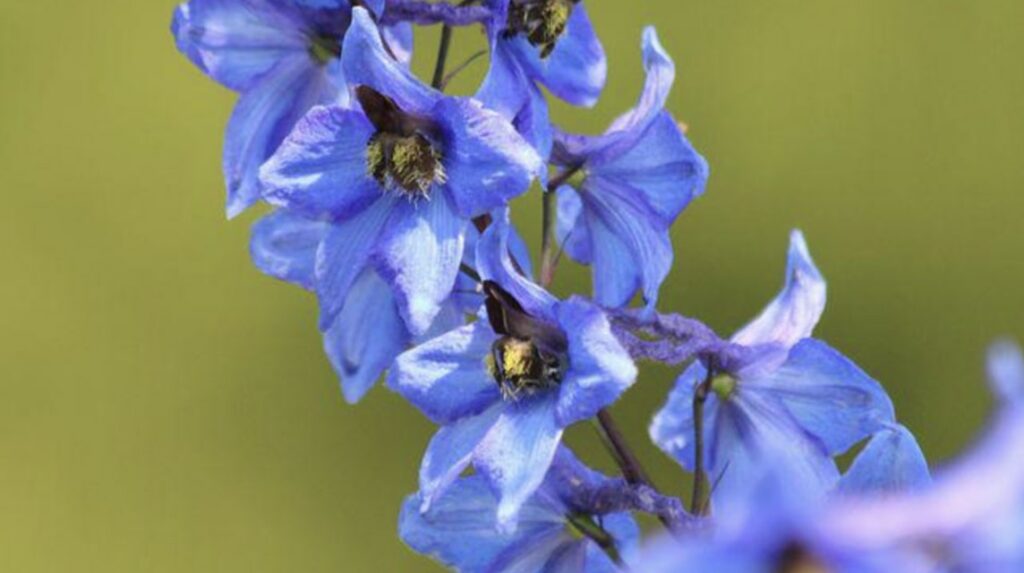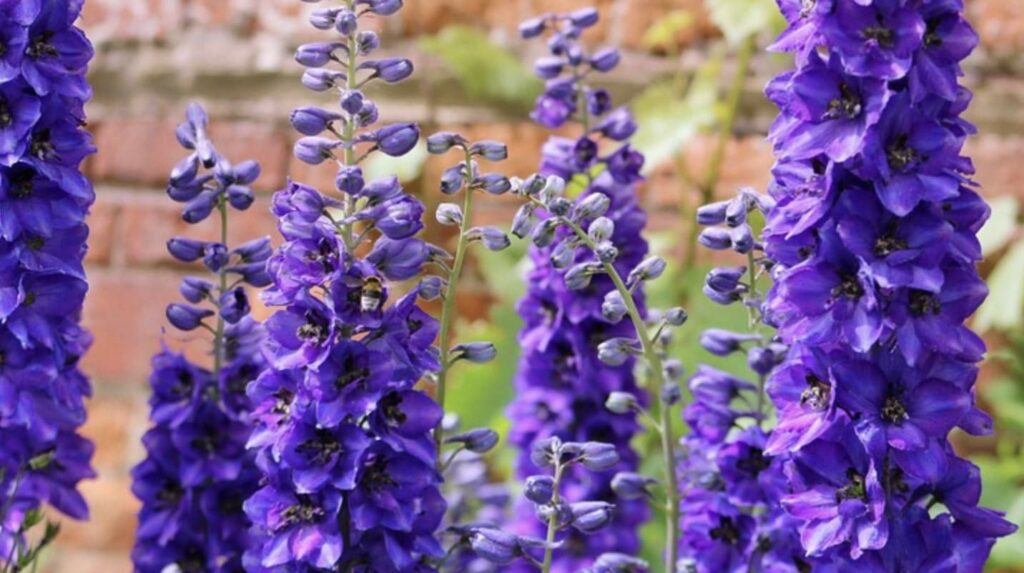One way to impress neighbors and guests in your home is to create a garden with showy and grand flowers, such as the likes of delphiniums.
Though the two look somewhat similar, delphiniums don’t belong to the orchid family. Rather, they belong to the huge buttercup family.
One of its kind is the vibrant larkspur, which is typically blue or lavender. Moreover, it’s the birth flower for July babies and means hope, dignity, and purity.
There are plenty more fun facts about them, but we’re going to focus on how to take care of delphiniums in this guide.
Growing Delphinium Plants


Delphiniums are planted in spring. The morning sun is the best for them, and they need around six to eight hours of exposure every day to grow stunning florets and healthy stems.
They prefer well-drained, nutrient-rich, and slightly basic soil. You can spread mulch around it, but don’t make it too close to the plant, as this will damage them.
Besides that, you have to protect them from strong winds and rains, which will cause the plant to break or rot. For this, you can build a sturdy stake structure and cover its top for each plant.
Also, space the delphiniums apart from each other to allow air to circulate in between them. This prevents harmful plant disease and mold growth that can cause it to wither or die.
And delphiniums are heavy feeders, so you can give them slow-release liquid fertilizer every two or three weeks.
This being said, refrain from choosing a fertilizer that’s very high in nitrogen, as this will reduce flower growth.
Caring Tips for Delphiniums


Proper care has to be taken when watering these flowers. Whenever their soil is dry, water deeply (about 8 inches or more below the soil surface) to allow the plant roots to hydrate.
And while you pour water on your delphiniums, make sure not to touch the leaves. The reason is the plant can get a disease and attract pests from this.
Should you decide to propagate your delphiniums, use only fresh seeds and plant them in a pot or seed trays.
Note that you have to be patient as they germinate slowly, taking a year or more. But you can do something about it to speed up the process.
For this, presoak the seeds and place them at a location with the following temperatures: 75℉ during the day and 65℃ at night. And then proceed to cover the seeds with only 1/8 inch of soil.
Then, water the soil until moist. As soon as two leaves have sprouted, that’s a sign you can already transplant them into the garden or a larger plant container.
Also, delphiniums are prone to a range of diseases including Southern blight (a soil-borne fungus), powdery mildew, crown and root rot, and rust, to name several.
Ensuring the plants get adequate airflow, preventing leaves from getting wet, and following other proper care practices we have discussed can rule out these serious problems for them.



